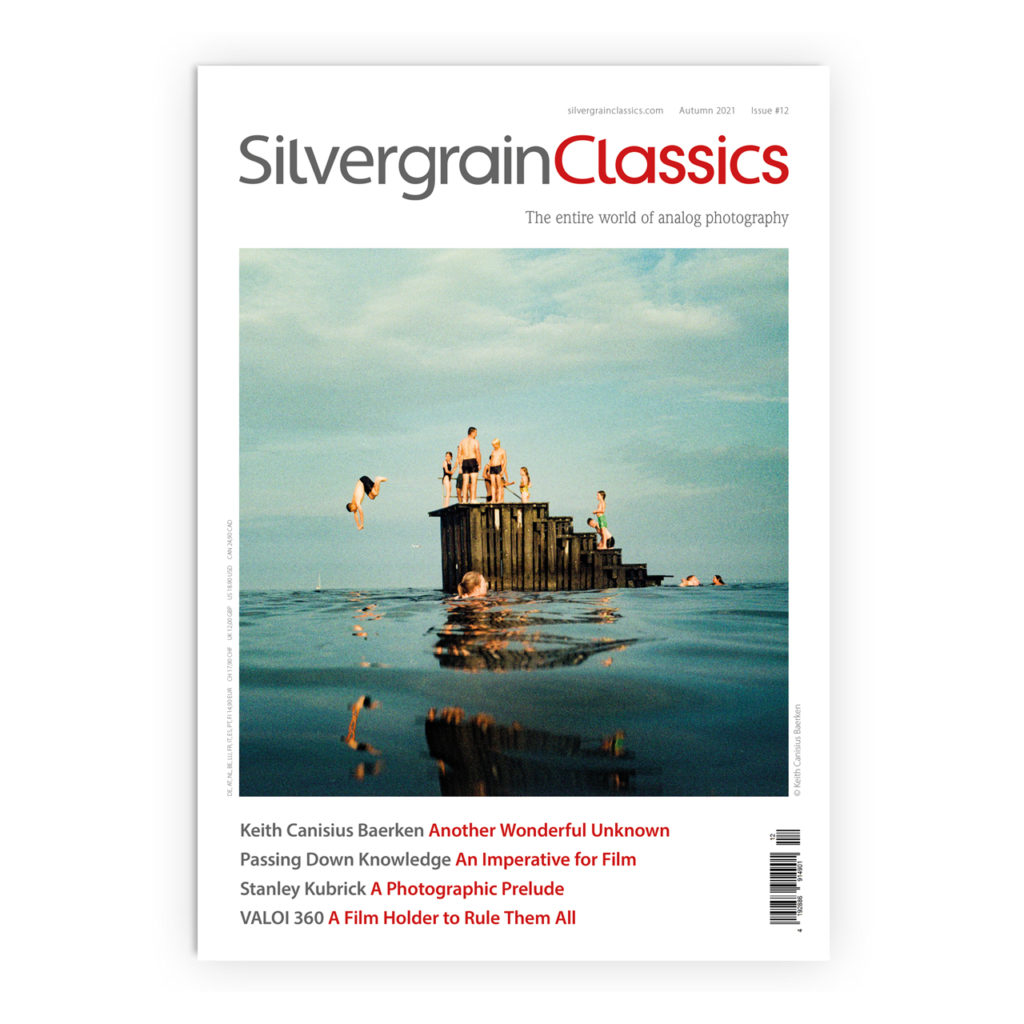The Minolta XM* and expired Ektachrome 100G on a cold morning walk
Marwan el Mozayen takes his Minolta XM, and a roll of expired Ektachrome 100G on a winter’s walk…
*The Minolta XM was sold under different names, in America it was the Minolta XK and in Asia under the designation Minolta X-1. The functions and the equipment were identical.
By Marwan el Mozayen.
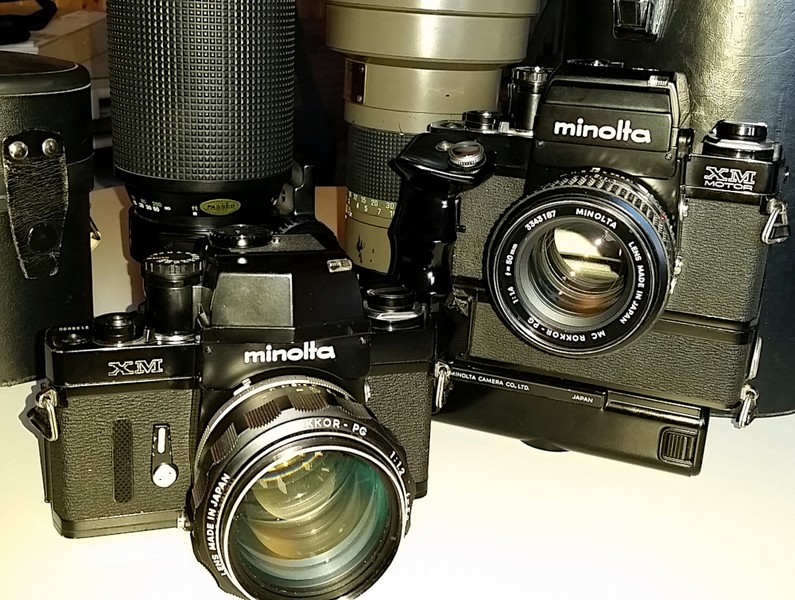
The Minolta XM
Almost two months ago we had a very sudden cold snap and a veil of ice crystals settled over the morning landscape.
The beautiful sunshine was just too inviting, and I felt the need to take a photo walk in order to relieve a little stress. At home there are always cameras on a table or side shelf. Some of them are for decoration and others always are always ready to be used. I had just received the quarterly delivery of a package of film from Analogheld. This included an expired roll of Kodak Ektarchrome 100G. I loaded my Minolta XM with it, hoping to capture some very pastel landscape scenes. The Minolta XM also has a function that creatively supports this task, it was in combination with the Rokkor 50mm 1,4 the photographic tool of choice for me.

A winter scene shot on expired Ektachrome 100G
The XM is the first of Minolta’s four professional SLR cameras and is thus the forefather of the later 9000, 9xi and Dynax 9. Anyone who picks up this camera for the first time quickly realizes that this is a special design.
For Minolta fans, the XM and the even more rare XM MOTOR is somehow the Holy Grail of professional cameras. In any case, the camera always feels damn good when I use it.
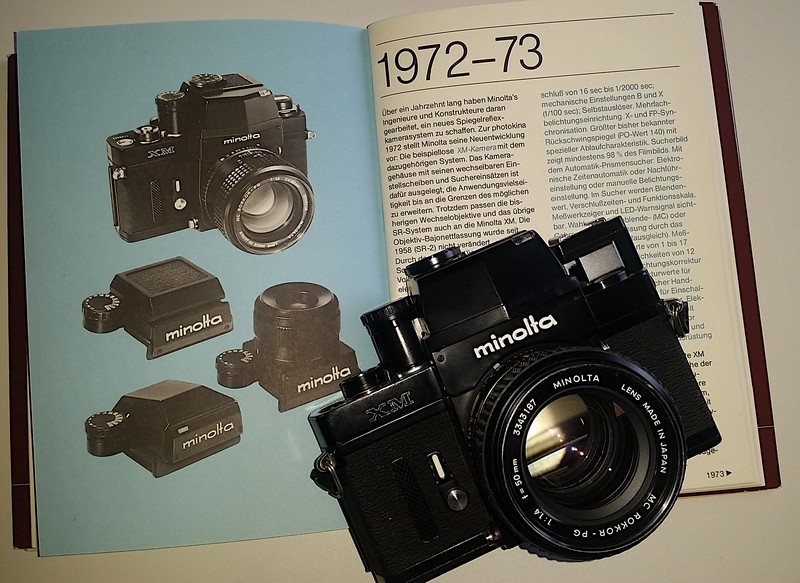
The Minolta XM with original advertising.
In the first third of the 1960s, several key people in the Minolta executive suite in Osaka came together and decided to develop “THE” ultimate professional camera that would be far ahead of its time, incorporating new technologies never seen before. It had to be better in every aspect than what the competition had to offer at the release date. At Photokina 1972, after almost 10 years of development, the team led by Y. Kuramoto presented the result of this challenge. The Minolta XM, an entire professional SLR system with interchangeable viewfinder and interchangeable focusing screens. It featured a new IC-controlled automatic shutter. Comparable cameras, such as the Nikon F3, Canon F1 New or the Pentax LX would not appear until the 1980s, so the Minolta XM had no rival when it was released.
The lenses for the XM were also of exceptional high quality. Perfectly ground-in, silky-smooth focusing worms were manufactured from a combination of brass on aluminum. This clearly shows the influence of Leitz, who were Minolta’s partner at the time. The optical performance is also excellent. Both the MC 50 mm 1.4 and the MC 1.2/58mm are still considered excellent lenses today.

This roll of Ektachrome 100G created the pastel colours I was after.
With the AE viewfinder and a 50mm f/1.4 Rokkor lens, the non-motorized version weighs about 1200g. Almost all components and controls are made of metal and make a high-quality impression. These cameras show no signs of fatigue even after decades of use.
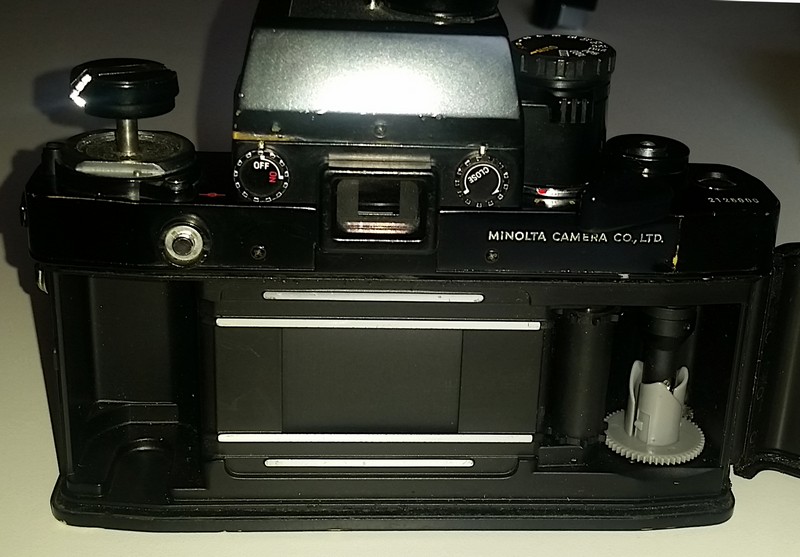
The Minolta XM features a titanium shutter.
Contemporary cameras like a Nikon F2 or Canon’s F1 seem almost anachronistic in direct comparison, with their match needle metering, and despite the same age. The XM was also the first SLR camera to combine automatic timing (Automatic Exposure, AE) and metering through the lens (TTL). It is equipped with a titanium shutter that is fast up to 1/2000s, but also allows electronically controlled shutter speeds up to 16s. In addition to the electronically controlled speeds, there are two mechanical emergency speeds (X and B) that also work without a battery. There were a number of viewfinders for this camera, so for the sake of simplicity, let’s limit ourselves to the the AE viewfinder which was the most common viewfinder. Here, as known in the Minolta SR-T 101 from the 60s, the exposure metering is done with two CDS cells connected in series (CLC “Contrast Light Compensation“). Thus, the weaker illuminated resistor has a proportionally stronger influence on the result of the exposure measurement. The System can be considered as a first implementation of the multi-zone metering system.
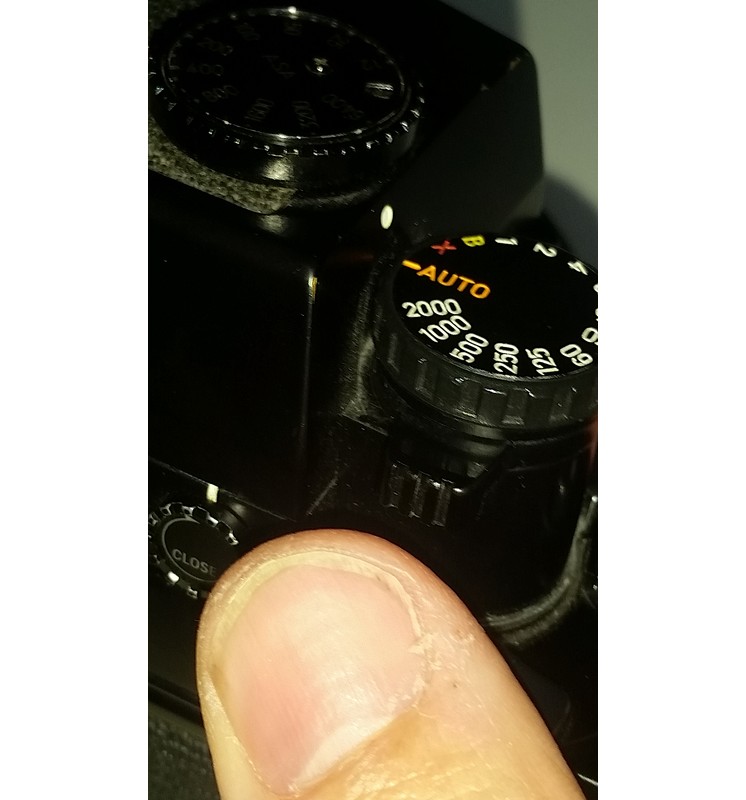
Exposure compensation is controlled via a thumb switch on the Minolta XM.
It should be mentioned that the Minolta XM is not a lightweight due to its full metal design as a professional device. The majority of the user interface is self-explanatory, as with all other classic cameras of this time, with the exception of the so-called “Sens Switch”. This is a grip switch that must be pressed when the camera is triggered. If it is released, the circuit is interrupted, and the mirror flips up but remains there. Background was the use of electronics. The engineers wanted to prevent the main switch is forgotten to turn off and the probably back then expensive button cells would be empty too quickly. Pressing this switch bar occurs while holding the camera and also immediately activates the measurement electronics. For me, this is not a problem and I always do this instinctively when I use the camera. There is an override switch on the AE viewfinder that permanently activates the circuit. But don’t forget to switch it off!
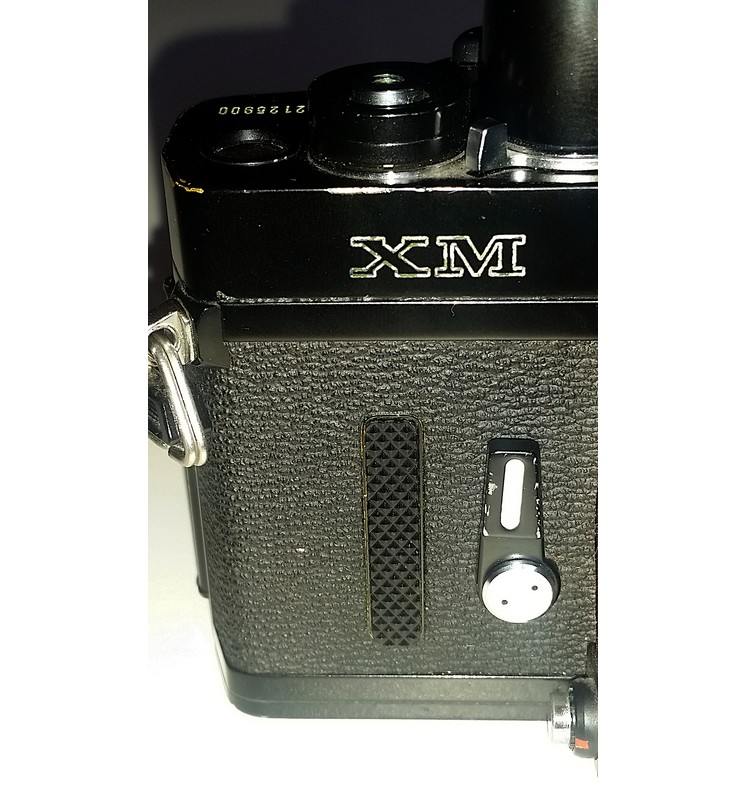
The sensor switch on the Minolta XM is designed to preserve battery life.
I deliberately chose the camera for the planned scene. Ice and snow landscapes always lead to incorrect metering because most light meters see the white of ice and snow as gray and therefore underexpose incorrectly. I could have used an external light meter, but I thought it is a good chance to prove if the Minolta really works as the marketing back then promised. The Minolta CLC system measures the light falling on different parts of the viewfinder screen and provides a reading that takes the contrast in a scene into account. This enables the camera to significantly reduce misinterpreted underexposures in a photograph. In addition to the exceptional metering system, the Minolta offers something that no other later professional camera in automatic mode could offer, the “Auto Exposure Override Control”! This is basically an exposure compensation function. Nothing really special, but how Minolta designed this exposure compensation lever makes it ingenious. Only from the Mind of Minolta, below the shutter speed selector on the AE prism is a spring-loaded lever. This can be swiveled smoothly to the right or left with your thumb to quickly and efficiently correct exposure without having to take your eyes off the viewfinder. Moving it to the right allows you to overexpose by up to two stops and moving the lever to the left results in up to two stops of underexposure. Compensations are precisely displayed in the viewfinder, so you can see at a glance how the exposure is changing. When you release the lever, it jumps back to its central rest position.
Let’s get back to my winter walk. The picture results of the park in Bad Nauheim in direct proximity to our SilvergrainStudioLabs came out as I had intended. The film, which has been expired for over 2 decades, was developed in our JOBO ATL3, and processed using in the Tetenal 3 Bad E 6 Kit. I am always thrilled when I then see developed slides on the light desk! The colors are so special! I think the Rokkor lens was and the exposure control of the XM in combination with the exposure override function were an excellent choice.

Shot on expired Ektachrome 100G.
You can find Marwan el Mozayen on Facebook at https://www.facebook.com/profile.php?id=100010811806539
Images © Marwan el Mozayen 2023.
You might also be interested in this previous SilvergrainClassics article on shooting the last roll of APS film https://silvergrainclassics.com/en/2022/11/the-last-roll-of-aps/.
You can find an index to the entire collection of SilvergrainClassics magazines here https://silvergrainclassics.com/en/magazine/index-of-articles/

